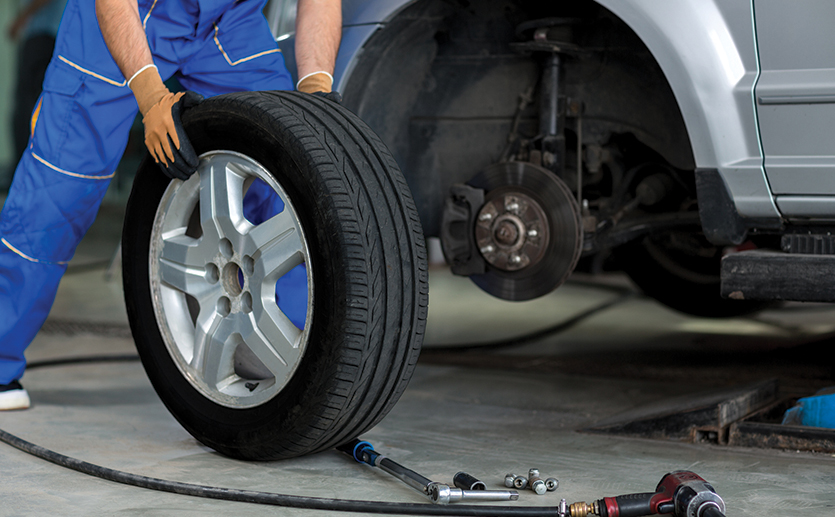Keep Rolling Smoothly: GMC Tires Service by Morris Tires
Wiki Article
Tire Solution: The Impact of Weather Condition Problems
When it pertains to ensuring ideal efficiency and security when traveling, recognizing the effect of weather condition problems on tire service is important. From scorching warm to icy roadways, each weather aspect can significantly influence tire performance and total driving experience. By delving into the effects of differing weather condition problems on tires, chauffeurs can obtain beneficial insights that might boost their car's performance and longevity. In this conversation, we will explore the complex connection in between weather and tire service, dropping light on the significance of weather-specific tire upkeep practices and considerations.Heat and Tire Performance
When revealed to high temperatures, tires experience modifications in efficiency that can significantly affect lorry safety and handling. The heat created from prolonged driving or warm climate problems creates the tire rubber to soften, leading to decreased step life and increased wear. As the rubber ends up being softer, the tire's grasp when traveling decreases, impacting stopping ranges and overall traction. In extreme cases, excessive heat can even cause tire blowouts, presenting an extreme safety risk to the lorry and its occupants.
Winter Impacts
Cold weather condition conditions can have a considerable impact on tire efficiency and safety. In cool climate, tires might additionally lose air pressure much more rapidly, which can impact dealing with and gas performance.To reduce the effects of winter on tires, it is crucial to routinely inspect tire stress and inflate them to the producer's suggested levels. Making use of winter months or all-season tires designed for chilly climate conditions can also improve traction and grip on icy or snowy roads. Appropriate tire maintenance, consisting of regular assessments for wear and damage, becomes even extra crucial throughout cooler months to make sure ideal efficiency and safety.
Rainy Conditions Impact
During stormy problems, tire performance and safety can be considerably affected by the damp roadway surface areas and lowered exposure. The step pattern of tires plays an essential function in preserving grip on damp roads. Tires with damaged treads are a lot more vulnerable to hydroplaning, where a layer of water constructs up between the roadway and the tire surface, resulting in loss of traction. To combat this, motorists must on a regular basis evaluate their tires for ample tread depth and consider investing in tires specifically created for wet conditions.Furthermore, stormy weather can additionally decrease visibility, making it challenging for motorists to see the roadway in advance clearly (GMC Tire Service). In such problems, it is important to adjust driving speeds as necessary and keep a risk-free complying with distance to enable for sudden stops. Effectively filled with air tires can additionally aid in keeping control on damp roads by giving much better handling and grasp
Snow and Tire Security
Snow-covered roadways posture special obstacles for chauffeurs, emphasizing the relevance of appropriate tire selection and maintenance. When driving in snowy conditions, having the best tires can make a significant difference in safety and performance. Winter season tires are designed with special rubber compounds and step patterns to give better grip on snow and ice contrasted to all-season tires. The deeper treads and sipes of winter months tires help grip the roadway much better, minimizing the risk of gliding and slipping.
Moreover, drivers need to take into consideration setting up tire chains in severe snowy conditions. Tire chains offer added grip by gripping the snow and ice, enhancing stability and control. It is vital to adhere to manufacturer guidelines when using and setting up tire chains to prevent damages to the tires and lorry (GMC Tire Service). By picking the right tires, maintaining appropriate inflation, and taking into consideration extra traction help like tire chains, vehicle drivers can enhance their safety and security when navigating snow-covered roadways.
Weather-Related Tire Upkeep
Weather-related tire here are the findings maintenance includes a range of techniques intended at ensuring optimum tire feature and longevity in different weather circumstances. One vital element of weather-related tire maintenance is tire stress law. Checking tire walk consistently and replacing tires when tread wear reaches a specific depth is important for keeping traction and security in damaging weather condition.
Conclusion
In verdict, weather problems have a substantial effect on tire efficiency and safety. From heat impacting tire pressure and put on to cold weather lowering traction, it is vital to take into consideration the climate when maintaining and utilizing tires.In this conversation, we will explore the intricate connection between weather condition problems and tire service, shedding light on the importance of weather-specific tire upkeep techniques and factors to consider.

Report this wiki page